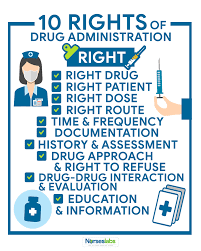A nurse has received change-of-shift report on four assigned clients. For which of the following clients should the nurse intervene to prevent a potential food and medication interaction?
A client who is receiving verapamil and has a continuous infusion of total parenteral nutrition (TPN)
A client who is taking phenytoin and is requesting a milkshake
A client who is receiving a diet high in potassium-rich foods and furosemide by mouth
A client who is receiving an MAOI and is requesting a cheeseburger for dinner
The Correct Answer is D
A. This choice is incorrect because verapamil and TPN do not have a significant food and medication interaction. Verapamil is a calcium channel blocker that can lower blood pressure and heart rate, while TPN is a form of intravenous nutrition that provides calories, electrolytes, vitamins, and minerals. The nurse should monitor the client's vital signs and blood glucose levels, but there is no need to intervene to prevent an interaction.
B. This choice is incorrect because phenytoin and milkshakes do not have a significant food and medication interaction. Phenytoin is an anticonvulsant that can decrease the absorption of some vitamins, such as folic acid and vitamin D, but milkshakes are not a major source of these nutrients. The nurse should encourage the client to eat a balanced diet and take supplements as prescribed, but there is no need to intervene to prevent an interaction.
C. This choice is incorrect because potassium-rich foods and furosemide do not have a significant food and medication interaction. Furosemide is a loop diuretic that can cause hypokalemia, or low potassium levels, but potassium-rich foods can help prevent this complication. The nurse should monitor the client's electrolyte levels and fluid balance, but there is no need to intervene to prevent an interaction.
D. This choice is correct because MAOIs and cheeseburgers have a significant food and medication interaction. MAOIs are antidepressants that can cause hypertensive crisis, or dangerously high blood pressure, if the client consumes foods that contain tyramine, such as aged cheeses, cured meats, fermented foods, and beer. The nurse should intervene to prevent the client from eating a cheeseburger and educate the client about avoiding tyramine-containing foods while taking MAOIs.
Nursing Test Bank
Naxlex Comprehensive Predictor Exams
Related Questions
Correct Answer is B
Explanation
A is incorrect because the completion of the incident report should not be documented in the client's medical record, but in a separate file for quality improvement purposes.
B is correct because the time the medication was given is an essential fact related to the incident that should be documented in the client's medical record.
C is incorrect because the reason for the medication error should not be documented in the client's medical record, but in the incident report for analysis and prevention of future errors.
D is incorrect because the notification of the pharmacist should not be documented in the client's medical record, but in the incident report for follow-up and corrective actions.

Correct Answer is D
Explanation
A. Flexing the client's neck forward can increase intracranial pressure by impeding venous drainage from the brain and increasing cerebral blood volume. Therefore, this choice is incorrect.
B. Grouping several nursing activities to be completed at one time can increase intracranial pressure by stimulating the client and causing fluctuations in blood pressure and heart rate. Therefore, this choice is incorrect.
C. Limiting suctioning the client's airway to 30 seconds at a time can reduce intracranial pressure by minimizing hypoxia and hypercarbia, which can cause cerebral vasodilation and increased cerebral blood volume. However, this intervention alone is not sufficient to prevent increased intracranial pressure, and suctioning should be done only when necessary and with caution. Therefore, this choice is partially correct but not the best answer.
D. Placing the client in a quiet environment can reduce intracranial pressure by minimizing sensory stimulation and promoting relaxation, which can lower blood pressure and heart rate and decrease cerebral metabolic demand. Therefore, this choice is correct and the best answer.
Whether you are a student looking to ace your exams or a practicing nurse seeking to enhance your expertise , our nursing education contents will empower you with the confidence and competence to make a difference in the lives of patients and become a respected leader in the healthcare field.
Visit Naxlex, invest in your future and unlock endless possibilities with our unparalleled nursing education contents today
Report Wrong Answer on the Current Question
Do you disagree with the answer? If yes, what is your expected answer? Explain.
Kindly be descriptive with the issue you are facing.
